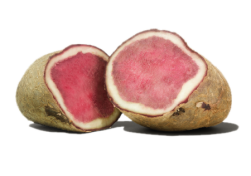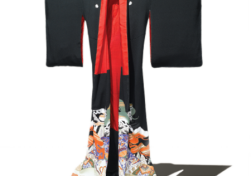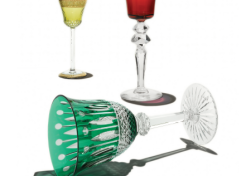When officials turned away women who weren’t wearing high heels at a gala screening of Todd Haynes’ Carol at this year’s Cannes Film Festival, the organizers were woefully arrière-garde – because in recent seasons there has been a noticeable return to flats. On the catwalks, designers from Prada to Louis Vuitton have embraced flats, from wedges and ballet pumps to the edgy green point-toe Nicholas Kirkwood shoe photographed here. Catherine Deneuve became the Queen of Flats after wearing a pair of Roger Vivier pumps in the 1967 movie Belle de Jour. They became a huge hit, and Vivier sold 200,000 pairs in one year. Such shoes are popular, says the label’s designer Bruno Frisoni, because “they are like jewels for the feet: subtle and powerful, sexy but never garish”. But then, as Deneuve herself pointed out, women of her class and era would never have dreamed of wearing heels. “One cannot walk properly in very high heels,” she said. “But also, we believed that having a natural allure was the most important thing.” Cannes, take note. nicholaskirkwood.com
Ask the international book dealer Bernard Shapero why there’s such a demand for rare old natural history books and he’s quick to answer. “People love to be surrounded by things they know, and everyone knows what a bird looks like, or a plant or an animal,” he says. “In addition, they’re also usually extremely beautiful.” They certainly are. When large-scale natural history books, such as Daniel Giraud Elliot’s The New and Heretofore Unfigured Species of the Birds of North America shown here, were printed in the 1800s, each illustration was hand-painted. The time invested in creating the books, says Shapero, “made them extremely expensive”. One of the most valuable books ever sold, The Birds of America by John James Audubon (1785-1851), fetched $12 million at auction, and contained 500 hand-tinted watercolors. Those interested in dipping a toe into the rare book market should look to dealers, who have hundreds of books for sale about natural history. The website of the International League of Antiquarian Bookseller lists dealers and fairs around the world. ilab.org; shapero.com
The potato is often referred to as “humble”, a support act rather than a star. But there’s something cooking in carbohydrate land, and the potato is climbing the ladder of gastro success, as chefs focus on the right kind of potato for each dish. For, like people, potatoes differ: some are smooth and waxy, others fluffy and floury. They also come in many colors, including red, like the Burgundy Highland Reds pictured here, and blue varieties believed to closely resemble their Andean forebears. Much of the new interest in potatoes is driven by farmers’ markets and experimentation by artisanal growers. There are now about 200 different types of potato available, and savvy diners are starting to understand the difference. Andrew Roche, executive chef of The St. Regis Washington, D.C., has noticed the emergence of potato connoisseurs in the past few years. “People enjoy the meal, then ask questions – and it’s about the potatoes, not the lamb or the sea bass. And if it’s a purple potato, it’s a novelty.” thompson-morgan.com
Skateboarders and surfers might not immediately strike one as being kin. The former inhabit urban environments, while the latter ride the wild ocean waves. But skateboarding was born out of Californian surfers’ desire to ride a board whatever the weather – by attaching wheels from roller skates to pieces of wood, they could ride year-round – and today the best skateboards are still, like surfboards, hand-crafted from wood. This natural material is partly popular, says Texas-based maker Jake Eshelman, because skaters still take inspiration from 1960s pioneers “who would make boards in their garages, using planks and their dad’s power tools, in a way that was rather beautiful and naive”. Eshelman’s Side Project Skateboards are made from found hardwoods that are not endangered, the most popular being cherry maple and walnut. Some boards, inlaid with strips, might contain up to 35 different pieces, on to which are added American-made ball bearings, Seismic wheels and Chromexcel leather. The end product, he says, “is in a bracket somewhere between functional art and design”. sideprojectskateboards.com
As recently as 80 years ago, the kimono – “something to wear” – was still commonly worn in Japan. An outer garment sported by both men and women, it can be adorned in different ways. Men’s kimonos might be embellished with paintings of great warriors. Women’s are traditionally embroidered and delicately painted with natural scenes and, to reflect the modernization of society in the 20th century, bright graphic prints. Whatever the imagery, a kimono was historically a symbol of power. Today, kimonos are mostly worn for formal occasions, but demand for them endures, with designers such as Anna Sui and Yohji Yamamoto launching contemporary versions as well as kimono-inspired dresses. Ichiroya, a family-run Japanese company which deals in traditional cultural items, says many of its customers buy the jackets to wear with modern dress. In the West, too, the kimono is enjoying a comeback. As kimono dealer Ceri Oldham from Wafuku puts it, “Kimonos are wearable textile art and have an otherworldliness that one finds in no other garment. It is impossible not to feel elegant while wearing one.” ichiroya.com; wafuku.co.uk
Colored wine glasses have a noble history. They were popular with the Romanovs, the French Court and Britain’s Georgian dandies, and now they’re back in vogue. Versace, for example, has brought out wine glasses with arabesque patterns and yellow-tinted glass heads, while the antiques market is aflame with colored glasses from names like Moser, Heckert and Baccarat. Europe’s oldest glass studio, with roots in the 16th century, is the Compagnie des Cristalleries de Saint-Louis in Lorraine, France. “The first colored pieces were created at Saint-Louis in the 19th century,” says Jérôme de Lavergnolle, the glassmaker’s CEO, who describes the creation of a colored crystal glass as “a kind of alchemy”. It should go without saying, but colored wine glasses should be made of colored glass: that is, glass with color contained within its crystal, rather than sprayed on. As M. de Lavergnolle notes, “Each colored crystal glass turns a dinner into a celebration and gives a little extra to the ordinary.” Let’s drink to that. saint-louis.com
In our brave new world of laptops and smartphones, one might be forgiven for thinking that writing by hand is in danger of dying out. Indeed, a survey of 1,400 children found that just one in five had ever received a handwritten letter. But the art of the thank-you note is returning, and the impetus is coming from companies like Thornwillow, which produces elegant stationery, printed on huge vintage presses in upstate New York, that echoes the golden age of letter-writing in the 1800s. In turn, St. Regis has created special environments in its Manhattan and Washington hotels that are conducive to letter writing. As Thornwillow’s founder Luke Ives Pontifall explains, the writing of letters and notes on beautiful paper, with a good pen, has become more relevant than ever. “In this age, a hand-written note is a powerful mode of communication that can be saved and passed on. It is a miniature time capsule, a memorial of a moment, and, unlike an email, it communicates your thanks with lasting intent.” thornwillow.com






